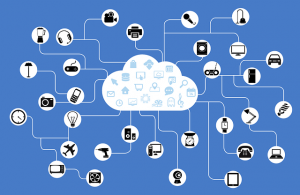
With increasing interest and investment in digitally-enabled mental health treatments and services, and a growing evidence-base supporting their use (e.g. Hollis et al, 2015; Marzano et al, 2015), questions around the (in)accessibility of such interventions are of critical importance.
Being ‘digitally excluded’, a term often used to refer to those who lack “the right access, skills, motivation and trust to confidently go online” (UK Government Digital Inclusion Strategy, 2014), potentially means being excluded from a wide and expanding range of e-Health interventions. These include, but are not limited to:
- Standalone self-help/management sites and apps,
- Supportive online communities, and
- More ‘blended’ forms of support, e.g.
- telephone and video consultations, and
- remote clinical monitoring of symptom severity.
Understanding whether and why people with mental health problems are digitally excluded is thus an important step in planning effective and widely accessible digital interventions.
In 2011, a survey of 121 people from community mental health services found that people with severe mental illness were at risk of digital exclusion, especially older individuals and those from black and minority ethnic (BME) groups (Ennis et al, 2012). Lack of resources and/or skills, rather than indifference, were reported to be key reasons for not engaging with technology (especially computers) amongst a subgroup of older individuals with psychosis.
Five years on, the survey was replicated with a larger sample to better understand the context of digital exclusion amongst people with mental health problems, including whether:
- Increased availability of Internet-enabled mobile phones has resulted in a decline in digital exclusion;
- Risk of digital exclusion remains highest amongst specific subgroups;
- Individuals with psychosis are at greater risk of digital exclusion than people with depression;
- Barriers to Internet use, and to the implementation of digital health services, have changed over time.

This cross-sectional study of 241 people included 61 online surveys and 180 face-to-face structured interviews.
Methods
A cross-sectional survey of Internet technology use was administered to 121 participants with psychosis and 120 with depression, recruited from inpatient (22) and outpatient services (166) as well as research registers (53) at a large UK secondary mental health provider.
Socio-demographic and clinical data were gathered alongside information regarding familiarity, access, daily use, confidence and motivation to use Internet-enabled technology (including smartphones and computers), and perceived barriers to use.
To avoid excluding those with poor digital literacy, the survey was completed both online (61) and in face-to-face structured interviews (180).
For the purposes of the study, digital exclusion was defined as:
Lacking access to any Internet-enabled device (or lacking confidence in using any Internet-enabled device) and accessing social media sites infrequently (i.e. monthly or less than monthly).
Results
Overall levels of Internet access and familiarity were high, and less than 1 in 10 participants were ‘digitally excluded’ (24/241). Of these, over 80% (20/24) had psychosis (as opposed to depression), suggesting a continued, disproportionate risk of digital exclusion within this group. Nonetheless and encouragingly, the proportion of digitally excluded individuals within the psychosis sample had declined significantly since the original study (from 30% in 2011 to 18.3% in 2016).
Participants with psychosis, particularly those who had completed the survey face-to-face, reported feeling less confident in using the Internet than those with depression, and were less likely to have Internet access (especially via mobile phones) or to use the Internet on a daily basis; but had higher motivation to increase their internet use (particularly via computers as opposed to mobile phones). For both samples, the most frequently reported barriers to use were security concerns and financial reasons. Amongst participants with psychosis, lack of knowledge, lack of places to access the Internet and lack of availability were also common themes, with only a minority of participants (15.6%, 17/109) citing a lack of interest in using the Internet.
Regardless of clinical diagnosis, older individuals, those from BME backgrounds and those who had been engaged with services for three years or longer were most at risk of digital exclusion; as found in the 2011 study. However, compared to the 2011 sample, more participants used the Internet daily (56% vs. 35%), and more were motivated to use technology (62.4% vs. 48%). Whilst daily computer use was fairly stable between 2011 and 2016, and computers remained participants’ preferred method of accessing the Internet (rather than mobile phones), access to Internet-enabled phones and confidence in their use were significantly higher in the 2016 sample than in the 2011 one.

This survey found that less than 1 in 10 people with mental illness were digitally excluded.
Conclusions
In the authors’ own words:
The good news is that the majority of the 2016 sample claimed to have Internet access. The bad news is that digital inequality still exists […] There is still a digitally excluded minority without access to any Internet-enabled devices and/or without confidence in using the Internet, and their characteristics were similar to those identified five years previously.
Importantly:
they are excluded because they lack the knowledge, skills and financial resources, not because they lack the willingness.
These findings underscore the need for an evidence-based digital inclusion strategy to avoid digitally excluded groups becoming excluded from increasingly digital NHS services, and more widely. According to the authors, a key component of this strategy should be the provision of training in basic Internet skills (ideally using computers).

People with psychosis were far more digitally excluded when compared to people with depression.
Strengths and limitations
This work provides an important and rigorous snapshot of digital exclusion and ‘technological poverty’ amongst people experiencing mental health difficulties, and how this has changed, and not, in recent years. The extent to which this picture may apply to wider groups affected by poor mental health is however worth considering, given that survey participants were recruited from a single, London-based site (albeit from different settings within that). Other areas of the UK and especially rural communities are known to have higher rates of digital exclusion (in the general population, see e.g. https://doteveryone.org.uk/resources/heatmap/), so it would be good to replicate this work in different settings.
Also, whilst the study’s focus on specific diagnostic categories can help us understand who is most at risk of digital exclusion, it might be worth expanding the range of groups/conditions included in potential follow-up studies. Digital exclusion may not only be more prevalent, but also have more serious consequences for specific subgroups (e.g. individuals affected by severe social anxiety and others for whom engaging, and maintaining engagement, with (mental) health services is most problematic, or indeed for whom existing services are most ill suited).
Beyond and often inextricably linked to clinical factors, poverty, disadvantage and deprivation are likely to shape the effects, and likelihood, of being digitally excluded. This study’s findings suggest that resource exclusion may be a key barrier to digital inclusion amongst people with mental health problems (unlike, reportedly, for other groups in society, see OFCOM, 2009), but it is a shame that the survey did not include some measures of socio-economic status and inclusion, to better understand the role of social exclusion in digital exclusion.
Further questions, arguably better suited to a qualitative follow-up study, could have explored the perceived impact of being digitally excluded (as hinted by the authors, this may well include being and feeling excluded from society in general, as well as from National Health Services (NHS)), and examined in more depth why and how (as well as how much) people use and would like to use the Internet.
The finding that security concerns were the most frequently reported barriers to Internet use amongst participants with psychosis and those with depression (cited by almost 50% of individuals in each sample) also warrants further thought and exploration. Whilst it was perhaps beyond the paper’s aims and scope to fully consider its implications, this clearly indicates that solutions to the digital divide in mental health cannot only focus on the needs and ‘deficiencies’ of its users, but should also, and above all, aim to improve the systems and services with which they are encouraged to engage.
A final point to consider is the extent to which being digitally included can and should continue to be more or less equated with being able and willing to go online, and whether regular use of social media should also be a necessary condition for inclusion. Whilst both are indisputably important in our digital worlds, the proliferation of ‘smart’ devices, embedded in so many everyday objects (from personal watches and step counters to medical devices and wider infrastructures; a phenomenon described by some as the Internet of Things or the Internet of Everything) means that we are possibly more (inter)connected than many of us realise or desire. Although this is not always an active, consensual or informed form of digital engagement (and thus not necessarily inclusive as such), it opens new and exciting possibilities for creating digital health services that don’t (fully) exclude those who can’t or won’t go online. For instance, recent studies show much promise for systems that automatically monitor clinical symptoms via smartphones and other wearable and environmental sensors, e.g.
- Using geographic location data (Palmius et al., 2016) and devices sensing sleep, restlessness, eating habits, pitch and volume of speech (Prociow et al., 2012) to capture symptoms of bipolar depression; or
- Identifying relapse in psychosis (Kerz et al., 2016) and self-harming behaviour (Marzano et al., 2015) by remotely, continuously and passively monitoring sleep, motor activity, heart rate and other key variables).
Systems such as these can be used with people who have no digital/IT skills or confidence. Alas, this doesn’t resolve problems of poor motivation and lack of resources, nor people’s security concerns, and may in some cases exacerbate them.

Bridging the digital divide should be about improving services, not bemoaning the lack of digital skills of those who are excluded.
Summary
In the context of an increasingly digital NHS (and not only), it is important that we continue monitoring who is digitally excluded, why and with what implications, not least in relation to mental and physical health. Although digital exclusion may be in decline, it persists as a problem for a minority who lack the confidence and means to access the Internet, but not the motivation to do so.
People living with psychosis, BME groups, older people and those with long-term conditions appear to be over-represented in this excluded group. Fostering their inclusion may include facilitating access to the Internet and providing training in IT skills. However, as the Internet becomes more and more pervasive in everyday objects and devices, future digital health services may become less reliant on individuals actively engaging online, and perhaps better able to meet the needs of those who can’t or won’t access the Internet (e.g. for online therapy or support). Of course, this will only resolve part of the problem, and is likely to create new challenges as well as new opportunities; and, undoubtedly, many more questions for researchers and service providers to continue exploring.

Will smart devices help encourage digital inclusion or introduce a complex ethical dimension that discourages some from participating at all?
Links
Primary paper
Robotham D, Satkunanathan S, Doughty L, Wykes T. (2016) Do We Still Have a Digital Divide in Mental Health? A Five-Year Survey Follow-up. J Med Internet Res 2016;18(11):e309 DOI: 10.2196/jmir.6511
Other references
Ennis L, Rose D, Denis M, Pandit N, Wykes, T. (2012) Can’t surf, won’t surf: The digital divide in mental health. Journal of Mental Health, 21(4), pp.395-403.
Kerz M, Folarin A, Meyer N, Begale M, MacCabe J, Dobson RJ. (2016) September. SleepSight: a wearables-based relapse prevention system for schizophrenia. In Proceedings of the 2016 ACM International Joint Conference on Pervasive and Ubiquitous Computing: Adjunct (pp. 113-116). ACM. [Abstract]
Hollis C, Morriss R, Martin J, Amani S, Cotton R, Denis M, Lewis S. (2015) Technological innovations in mental healthcare: harnessing the digital revolution. The British Journal of Psychiatry, 206(4), pp.263-265.
OFCOM (2009) Accessing the internet at home: A quantitative and qualitative study among people without the internet at home (PDF). Ipsos Mori. 2009.
Palmius N, Tsanas A, Saunders KEA, Bilderbeck AC, Geddes JR, Goodwin GM, De Vos M. (2016) Detecting Bipolar Depression from Geographic Location Data (PDF). IEEE Transactions on Biomedical Engineering 42(14), pp.46-14.
Prociow P, Wac K, Crowe J. (2012) Mobile psychiatry: towards improving the care for bipolar disorder. International journal of mental health systems, 6(1), p.1. https://www.gov.uk/government/publications/government-digital-inclusion-strategy/government-digital-inclusion-strategy
NHS England (2014) Five Year Forward View.
